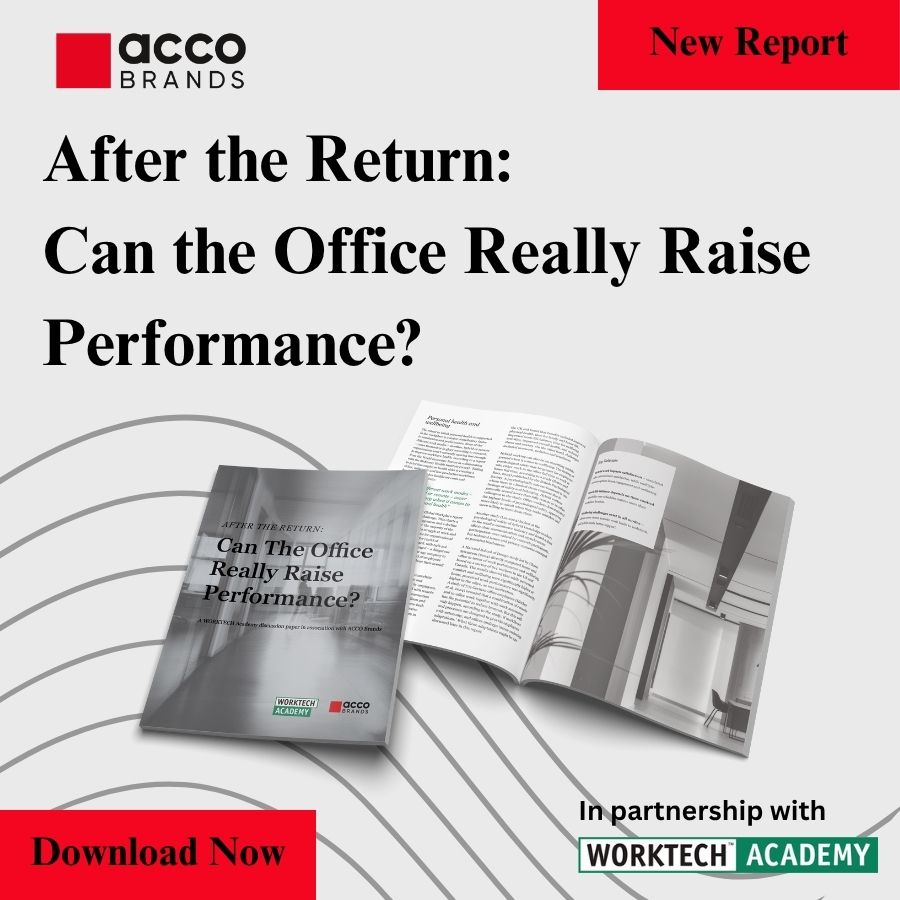How to scale and manage a smart office using data
Using data to provide insights into the office can be revolutionary but it can also be difficult for teams to manage all the different data streams available to them. Workplace apps can solve this problem
A key reason why many companies are struggling to get employees back into the office is that they haven’t adapted the office to provide value to employees in today’s working world. With evolving employee expectations, creating and implementing a hybrid workplace strategy can be a challenging exercise – but having data to support and inform your initiative makes the entire process much more effective.
So, where does this data come from and how can it be leveraged for outcomes that balance both the employee experience and company goals?
A workplace experience platform can allow you to understand how your space is being used and how to make decisions about real estate, and it may be the answer.
Workplace experience platforms
Workplace experience platforms are a great way to keep employees connected whether they work remotely, in office or with distributed teams. Centralising all digital touchpoints in one place simplifies the employee experience and allows them to access content on the go, giving them flexibility in how, when, and where they work, while providing management with meaningful intelligence to optimise those experiences.
Solutions like CXApp’s Workplace SuperApp streamline employee communication and allow them to plan their day all in one place. It becomes a central place for them to engage in — which makes it easier to gather information on their habits and preferences and make decisions about what changes need to be made to the office or the company’s hybrid work strategy. Below, are four areas where particularly impactful data can be gathered and actioned on.
Desk and room booking
Gathering data on when employees book desks and reserve meeting rooms, and what days they book them, can help gain insight on what the most popular types of desks or seating are, if employees prefer rooms with televisions or whiteboards, if they mostly come in on Tuesdays-Thursdays, etc.
If there are several rooms on a certain floor that are rarely used, this can be an opportunity to use that space for something else. If employees mostly book rooms for working with their teams instead of individual desks, this might mean that employees want the office to be a place for collaboration, and additional spaces are needed to make that happen.
Office occupancy reporting
To gain even more data, having sensors and beacons around the office can help monitor how employees occupy the corporate campus. Occupancy reporting, including information on when employees enter the office, arrive at their reserved desk or what office amenities are used most can help optimise the office experience. Even more interesting, reporting tools such as heat maps can visualise where employees spend most of their time in the office, and what space just isn’t being used. So, if employees aren’t using the entire office space over a period of time, it may be a sign that investing in new real estate is not the way to go.
Company-wide news feed
With a news feed, employees can like and comment on company updates and posts about the office — and the level of engagement on posts can indicate what employees are excited about, and what they may not be that interested in. If employees always have a great reaction to mental health or leadership workshops happening in the office, it can become a monthly occurrence as opposed to quarterly. Identifying and prioritising these micro-moments can also be a great way to encourage employees to come in more often.
Insights for office perks
What amenities are employees taking advantage of, and what are they just not interested in? A workplace experience app is a great way to collect data on employee preferences, so you know what amenities excite them and will get them to enjoy working in the office more. Another way to know their preferences? Just ask them! With the survey or poll function in the platform, companies can regularly collect employee feedback to determine what changes need to be made.
PQ: ‘Indoor intelligence can be very powerful in making decisions about the smart office…’
With real estate being one of the top corporate expenses, indoor intelligence can be very powerful in making decisions about the smart office. Gathering this data helps create long-term goals and strategies for the workplace and helps create a focus on the employee experience. Interested in learning more about transforming your workplace with smart office technology?








